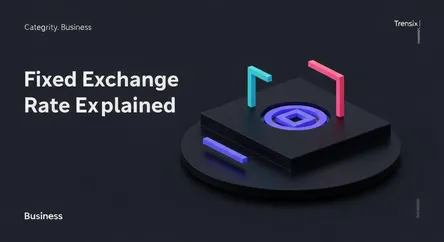Business
Fixed Exchange Rate Explained

Discover what a fixed exchange rate is, how it works, and why governments use this system to peg their currency's value to another.
What is it?
A fixed exchange rate, also known as a pegged exchange rate, is a currency system where a government or central bank ties its official currency exchange rate to another country's currency or a price of gold. The purpose is to maintain the country's currency value within a very narrow band. To maintain this rate, the central bank buys and sells its own currency on the foreign exchange market in return for the currency to which it is pegged. This contrasts with a floating exchange rate, where the market's supply and demand forces determine a currency's value.
Why is it trending?
The concept of fixed exchange rates remains a hot topic during periods of global economic volatility. Countries facing high inflation or unstable currency values often debate adopting a peg to create stability and predictability. It's trending in discussions about international trade, particularly concerning nations that use such systems to manage their economy and gain a competitive edge in exports. As central banks worldwide adjust their monetary policies to combat inflation, the advantages and disadvantages of different exchange rate regimes are frequently re-evaluated by economists and policymakers.
How does it affect people?
A fixed exchange rate offers stability, making international trade and investment less risky for businesses and consumers. Prices for imported goods remain predictable, which can help control domestic inflation. However, this stability comes at a cost. The central bank may have to prioritize maintaining the peg over addressing domestic issues like unemployment. If the government can no longer defend the peg, a sudden and sharp currency devaluation can occur, potentially triggering a financial crisis that impacts savings, investments, and the overall cost of living.